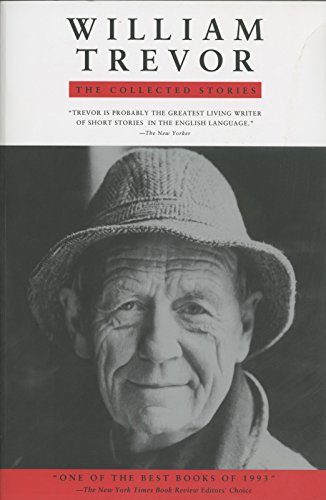This might actually win the award for the bleakest story in the Collected—a sentence I suspect I’ve written at least three times now. William Trevor’s standard mode is bleak, as over and over he describes the inability for people to alter or often even admit the straitened terms of their existence, so it takes a real doozy to stand out as bleak in comparison to the average. But such is the case with “Events at Drimaghleen,” which might make an even further case as one of the darkest stories ever written, rivaling classics like Katherine Anne Porter‘s “Noon Wine” and James Salter‘s “American Express.”
The titular events begin when one morning in May of 1985, Mr. and Mrs. McDowd, elderly farmers in a remote Irish hinterland, discover their daughter Maureen is missing. Maureen has been seeing a neighbor boy, Lancy Butler, who lives with his reputedly crazy mother. The McDowds suspect Maureen is running away with Lancy, but when they drive to the Butlers, they discover Maureen and Lancy and his mother dead from shotgun wounds. The local superintendent rules the case a murder-suicide: he postulates that Mrs. Butler, having jealously shot Maureen, was killed by Lancy as he wrested the gun away from her, before finally turning it on himself. Such is the accepted story in Drimaghleen until a newspaper reporter from Dublin and her photographer show up and begin asking questions. They pay the impoverished McDowds three thousand pounds for pictures and publish a story that proposes a counterfactual: Maureen grew angry at Mrs. Butler, killed the old woman and then Lancy and herself. The McDowds are devastated by the release of this story, a kind of second devastation as they are still grieving their daughter. Here is how the story ends:
Mrs. McDowd covered her face with her hands. Her thin shoulders heaved beneath the pain of her distress; sobs wrenched at her body. Too much had happened to her, the priest thought; it was too much for any mother that her murdered daughter should be accused of murder herself in order to give newspaper readers something to think about. Her husband had turned away from the table she sat at. He stood with his back to her, looking out into the years. In a low, exhausted voice, he said:
“What kind of people are they?”
The priest slowly shook his head, unable to answer that, and in the kitchen… Mrs. McDowd screamed. She sat at the blue-topped table with her lips drawn back from her teeth, one short, shrill scream following fast upon another. Father Sallins did not again attempt to comfort her. McDowd remained by the window.
This is a portrait of suffering and loss on a biblical scale. The destruction of three lives, resulting in the absolute destruction of a married life, and further, the destruction even of a way of life, as on the edges of Drimaghleen’s residents are poisoned by the newspaper story. The McDowds are stoic country people not given to speech or expressions of feeling—Mrs. McDowd’s shriek at the end is the animal sound of a person past any sane ability to comprehend or rationalize the pain in which they suddenly find themselves. It is a portrait of a slaughterhouse.
As is often the case with art of this darkness, a kind of parodic, ersatz darkness, a Grand Guignol horror, lurks nearby. I’m not sure why this is—I suppose the darkest stories possible in human life are often tinged with a hint of the gothic, even of the uncanny. It is the unusually dry crime novel that doesn’t at any point emit a whiff of brimstone. For me, a great deal of Cormac McCarthy falls on the wrong side of this line, turning the blackest and bleakest human drama into something that very often feels theatrical. “Events at Drimaghleen” nearly veers into camp with the seedy appearances of the city journos, but it doesn’t, instead giving the reader an impartial window into hell—we peer into the same window Mr. McDowd peers out of. The scariest part of the story is not McDowd’s scream, it is the mens’ acceptance of the scream, the fact that there is no solace possible now or hereafter, ever again.
And this is what the story is about, not merely the McDowds’ descent into hell, but the fact that such a place exists. There is a genre of great art that makes this its subject, the final end of comfort, the truth that some people live their lives in states of unimaginable utter degradation and pain and misery: that this too is a part of the human experience. I’m thinking here of Dostoyevsky and his twentieth-century peer Don Carpenter. A handful of short stories by Lucia Berlin. I’m thinking here of Goya’s Pinturas negras and Francis Bacon’s pope series, which managed both the camp and serious versions of this art. It is a rarified and in its way extremely niche realm of artistic expression. We spend our lives ignoring this realm, wishing it away, praying we never touch it, and most art does the same, rightfully afraid of attempting to portray this extremity of experience, rightfully afraid of affirming its reality. It is not a type of art that I wish to spend a great deal of time with, or wish to make myself, but I respect this art of desolation and the artists who are willing to get to this final, awful place.










